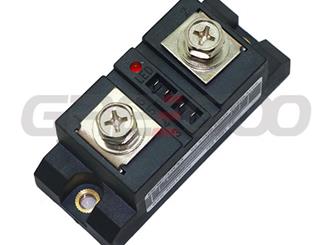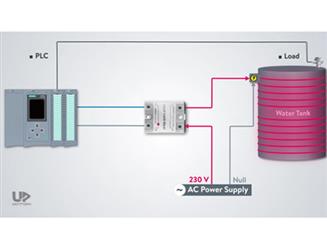How to Choose the Right Medium Voltage Current Transformer: MV Bushing CT vs MV CT
The main difference between Medium Voltage Bushing Current Transformer (MV Bushing CT) and Medium Voltage Current Transformer (MV CT) lies in their installation location, structural design, and application scenarios. Below is a detailed comparison:
1. Installation Location
-
MV Bushing CT:
- Installed on the bushing of high-voltage equipment (e.g., transformers, circuit breakers), directly mounted on the conductive part of the bushing.
- Integrated with the bushing, usually built-in or embedded.
-
MV CT:
- Independently installed on the busbar, conductor, or cable in the power system.
- Typically a standalone device, separate from other electrical equipment.
2. Structural Design
-
MV Bushing CT:
- Compact design, directly integrated with the bushing, using the conductive part of the bushing as the primary winding.
- Usually ring-shaped, designed to fit the bushing's shape.
- Suitable for limited space, especially for internal integration in high-voltage equipment.
-
MV CT:
- Independent device, usually column-type or ring-shaped.
- The primary winding is the conductor or busbar passing through the CT, and the secondary winding is connected to the measurement or protection circuit.
- Requires additional mounting brackets or foundations.

3. Application Scenarios
-
MV Bushing CT:
- Mainly used for current measurement and protection in high-voltage equipment (e.g., transformers, circuit breakers).
- Suitable for space-constrained scenarios, especially where the equipment requires an integrated current transformer.
- Commonly used for relay protection, metering, and monitoring.
-
MV CT:
- Widely used in medium-voltage distribution systems for current measurement, protection, and metering.
- Suitable for installation in switchgear, bus ducts, or cable systems.
- Broader application range, suitable for various standalone electrical equipment.
4. Maintenance and Replacement
-
MV Bushing CT:
- Since it is integrated with the bushing, maintenance and replacement are more complex, usually requiring power shutdown and bushing disassembly.
- Higher replacement cost.
-
MV CT:
- As an independent device, maintenance and replacement are relatively simple.
- Replacement does not require large-scale disassembly of other equipment.
Summary
| Feature | MV Bushing CT | MV CT |
| Installation Location | On the bushing | Independently installed |
| Structural Design | Compact, ring-shaped, integrated with bushing | Standalone device, column or ring-shaped |
| Application Scenarios | Internal high-voltage equipment, space-constrained | Medium-voltage distribution systems, broader application |
| Maintenance and Replacement | Complex, requires bushing disassembly | Simple, independent replacement |
The choice between the two depends mainly on specific application requirements and equipment design. If a current transformer is needed inside high-voltage equipment, a Bushing CT is typically used. For standalone medium-voltage distribution systems, a standard MV CT is more commonly used.

High frequency dc solid state relay, the application and features you may know.
10-1000Hz, 2400VDC, switching time is less than 0.25ms, mainly used for industrial control of DC high-voltage, high-current, high-power switching electrical equipment.
Read More
Difference Between Stud-Type and Capsule-Type Phase-Controlled Thyristors (PCT)
Capsule-type is better suited for higher power and more demanding heat dissipation requirements, while Stud-type is more appropriate for medium power applications with simpler installation needs.
Read More
𝑪𝒐𝒎𝒑𝒂𝒄𝒕 𝑺𝒐𝒍𝒊𝒅 𝑺𝒕𝒂𝒕𝒆 𝑹𝒆𝒍𝒂𝒚 - 𝑴𝒊𝒏𝒊 𝑷𝑼𝑲 𝑺𝒐𝒍𝒊𝒅 𝑺𝒕𝒂𝒕𝒆 𝑹𝒆𝒍𝒂𝒚 - 𝑭𝑨𝑺𝑻𝑶𝑵 𝑻𝒆𝒓𝒎𝒊𝒏𝒂𝒍 𝑺𝒐𝒍𝒊𝒅 𝑺𝒕𝒂𝒕𝒆 𝑹𝒆𝒍𝒂𝒚
𝑪𝒐𝒎𝒑𝒂𝒄𝒕 𝑺𝒐𝒍𝒊𝒅 𝑺𝒕𝒂𝒕𝒆 𝑹𝒆𝒍𝒂𝒚 - 𝑴𝒊𝒏𝒊 𝑷𝑼𝑲 𝑺𝒐𝒍𝒊𝒅 𝑺𝒕𝒂𝒕𝒆 𝑹𝒆𝒍𝒂𝒚 - 𝑭𝑨𝑺𝑻𝑶𝑵 𝑻𝒆𝒓𝒎𝒊𝒏𝒂𝒍 𝑺𝒐𝒍𝒊𝒅 𝑺𝒕𝒂𝒕𝒆 𝑹𝒆𝒍𝒂𝒚
Read More
How solid state relays work? Testing SSR with multimeter and wiring.
How solid state relays work? Hoto to Test a solid state relay with multimeter? How to connect a SSR relay from PLC to heater? You will get an answer.
Read More













